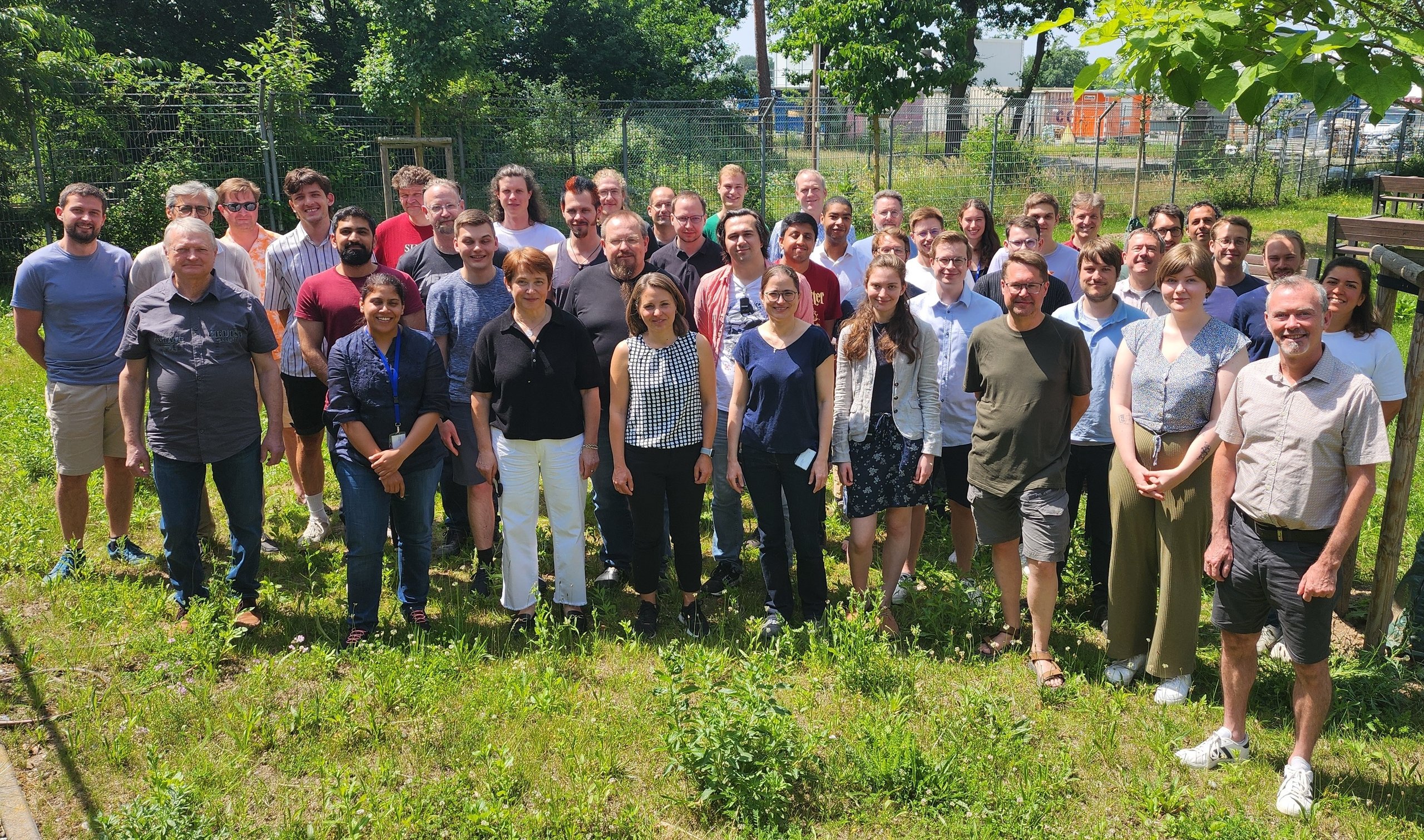
Employees of the plasma physics department and students/guests from associated universities.
Plasma Physics at GSI
Research Activities
The Plasma Physics activities with ion beams follow two lines.
One focuses on pump-probe experiments where the laser PHELIX converts thin foils or foams into fully ionized plasma. The plasma conditions are examined by the ion beam at the UNILAC to address long-standing issues such as energy loss and charge exchange of heavy ions when penetrating hot plasma.
The other area of investigations uses ion beams from SIS18 for the generation of warm dense matter (WDM). Thermodynamic and transport properties of refractory metals and high-Z materials near the boiling curve are being measured. To enlarge the diagnostic capability in view of FAIR, the development of laser-based soft and hard X-ray sources suited for Thomson scattering has been started.
The Facility for Antiproton and Ion Research (FAIR) will offer unique opportunities to study warm dense matter and samples with high energy density. The high-intensity ion beams that will be available at FAIR will allow us to create mm-sized samples of warm dense matter for equation-of-state studies by heating them with the ion beams. These intense ion beams can also be used to compress mm-sized samples to pressures of several million atmospheres, making it possible to study samples under conditions as in the interior of giant planets. FAIR will also provide intense proton beams, which can be used for imaging dense samples with proton microscopy. All research activities in this field are coordinated by the High Energy Density Science at FAIR (HED@FAIR) collaboration.












